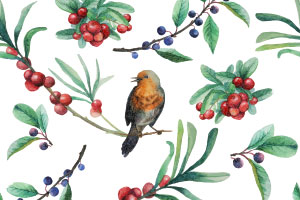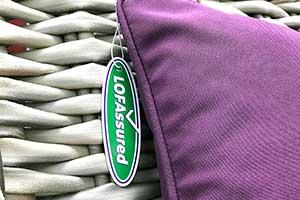Unfortunately, in recent years the bee population has seen a drastic decline — a third of bees have died, and if they became extinct this would have devastating effects on our ecosystem. This is because bees pollinate around 70 of the 100 different crop species that provide food for 90 per cent of the global population. It can be extremely rewarding helping wildlife thrive by attracting animals to a garden – here's what to invest in to help create a natural haven for animals…
Water features
Ideally, if your garden is big enough, you’d be able to integrate a pond. This, no matter how big or small, will allow water plants to colonise naturally. It will also provide a welcome spot for amphibians such as newts and frogs to breed but do note that they lie shallower water than is generally thought. However, try not to add fish to your pond if it’s primarily for wildlife as they will eat anything that moves!
If your garden doesn’t have that little extra space for a pond, consider adding a birdbath. This will take up less room and provide our flying friends with a much-needed supply of clean and freshwater which is suitable for drinking and bathing. Where possible, set this up at ground level where they would most likely find water in nature, but make sure there’s an open area between the bath and your shrubbery so that the birds can easily escape any predators, such as cats.
Compost bins
Composting can be beneficial for the ecosystem because this assists both plants and wildlife by speeding up nutrients’ natural recycling habits. It can make your soil healthy which will provide a great space for everything living and growing in it. Better still, this can be free and is easy to use, unlike if you were to import it from elsewhere. Compost bins are great shelter for smaller creatures who appreciate the heat that is released by decomposition.
Trees and shrubs
You’ll probably already be aware that garden plants support the survival of wildlife. By growing a mix of shrubs, trees and climbers, you can provide an area for food and shelter, including nests, for certain species of wildlife. Small trees and shrubs you should look to grow in your garden include rowan, elder, blackthorn and crab apple. These will offer a range of specialist native wildlife the support they need by providing for them – it will also supply you with a useful crop.
Flowers
Interestingly, specific species of flowers can attract specific species of wildlife! Wildflowers for example are great for bringing insects and pollinators such as butterflies and bees to your garden as they provide pollen and nectar which is crucial for food pollination. Lavender and thyme are great herbs that will help attract them. Elsewhere, purple loosestrife is an ideal wildflower for the soggier spots in your garden. Buddlea is another firm favourite of butterflies. Take a look at the different kind of seeds available for purchase.
Hanging feeders
Obvious, but essential — attract animals by feeding them. However, it’s not as simple as just hanging a feeder. It’s important to place them in an accessible but safe area which is out of reach of predators. A traditional location would be hanging from a tree, but if you only have limited space, then look at placing it on hooks on an external wall. If possible, try to keep any feeders out of direct sunlight.
Nesting boxes
It’s important that birds have a safe, secluded area during breeding season. Bird boxes are ideal to keep them protected during a vulnerable period. It’s important to realise that different types of birds prefer different boxes, so be sure to do your research if there are certain species you’d prefer to attract.
Wilderness areas
Use your lawn as food for mammals whose diets consist of grass and insects. Your lawn should include a pile of dead wood and a patch of longer grass as this will encourage grubs and beetles, which will in turn bring larger foragers to your space. It could also include a rock garden that supports those plants and animals that have adapted to surviving in thinner-soiled areas.
There are many options to make your garden an animal haven, so do your research to figure out which of these features best suit the size of your garden!





